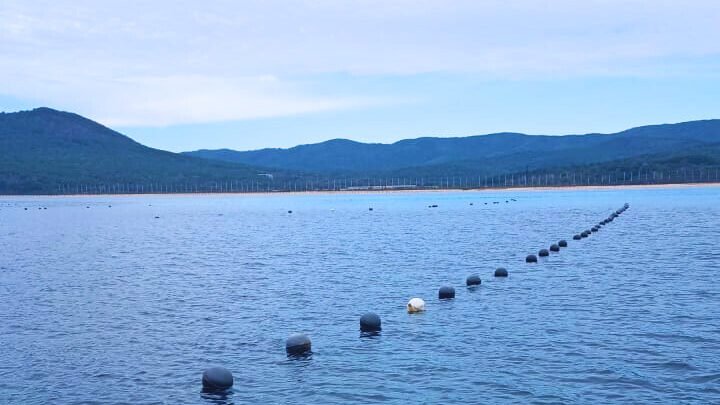Do you know how seaweed is grown?
At our pilot farm in the Sea of Japan, we have planted Undaria pinnatifida seaweed plantations, known in cooking as wakame. This edible seaweed, rich in iodine, B vitamins and fucoxanthin, is traditionally used in Japanese cuisine to make chuka salad.
Interesting fact: Undaria pinnatifida can grow up to 2-3 meters in length in one growing season, making it one of the fastest growing seaweeds in the world!
From the surface of the water, the plantation is a system of floats located at a certain distance from each other. Under the water, there is a complex cultivation system: each float has a special rope (substrate) attached to it — a carrier of seaweed spores.

These threads with sprouts will develop in optimal conditions until the end of May — beginning of June. At a water temperature of 10-15 ° C and good lighting, the algae reach maximum productivity. With the onset of summer, the harvest will begin, the predicted volume of which will be an impressive 70-80 tons!
Useful fact: growing algae is not only economically profitable, but also environmentally beneficial — one hectare of seaweed absorbs as much carbon dioxide as 5 hectares of tropical forest, helping to combat climate change.

